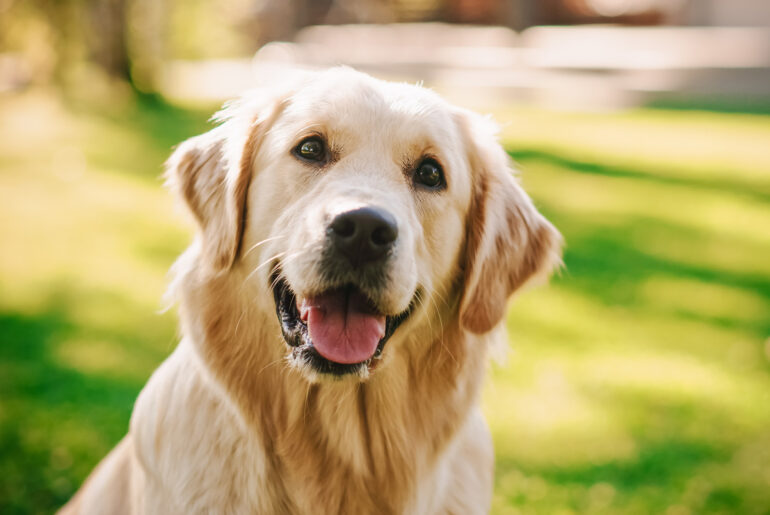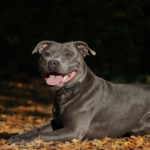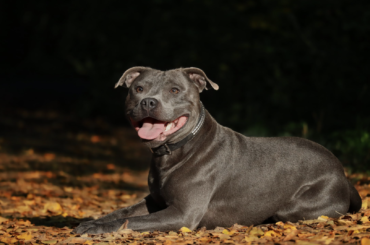Introduction
They’re warm, they’re intelligent. Built for sports, with their short, easy to care coat and high energy. The good natured, well tempered and hard working dog breed the Labrador Retriever is the most popular breed over at the American continent. They are good hunting partners working as retrievers for hunters, they have been seen working as assistant dogs and even help out in search and rescue missions. Belonging to a group of dogs known as Gun Dogs, the Labrador Retriever have been bred selectively in the past for their role as hunting companions. The Labrador Retriever has a muscular build that’s built for sports.
The sweet nature of a Labrador Retriever makes it the perfect therapy dog who visits the homes of the elderly and the hospitals. The higher level of intelligence that they show also makes them the ideal assistance dog for the people with disabilities. Thanks to their athletic build, strong sense of smell and an especially courageous nature, they also make the perfect search and rescue dog and as retriever dogs for hunters. The high intelligence also comes in gandy to the in sports when combined with their superb agility and obedience. Excelling especially in competitions involving obedience. However there’s one particular job that a Labrador Retriever would struggle with. Its sweet and helpful nature would prevent them from being a good watch dog, and would instead happily welcome intruders in and show them around.
History
The earliest origins of the Labrador Retriever can be found in the Canadian province of Newfoundland. If you rewind the clock 500 years back when the Europeans were finding their ways on to the Canadian Coasts. Long before any Europeans were able to plant their flags on Canadian territory, fishermen from Spain, France, Portugal and England were venturing into the Atlantic coast of the island of Newfoundland. Along with them came their dogs. Various breeds of them. All mingling with each other on this isolated island, they created a landrace breed, a free that evolved over the time on this isolated island adapting to the climate and the locality, known as St. John’s Dog, named after the capital of Newfoundland. This particular breed is no longer seen today save for the bronze statues that stand in harbourside Park in St, John’s. The breed became well known for their love for water and how they were able to move around and were able to haul nets and long line, dive in to retrieve cods and hats of fishermen from water while working with the newly flourishing fisheries of Newfoundland. Their well temperament and good working behaviour made them a favourite to the fishermen.
This breed was introduced to the British through ship trading between Canada and Poole in the southern English Harbours. The fishermen would have their dogs perform tricks for the gathered crowd there. English sportsmen imported a few to serve as retrievers for their hunting. One of the first people to import this breed of dogs to England and also the first person to refer to them as Labrador was the second Earl of Malmesbury, James Edward Harris, back in the 1830s. They were bred with British hunting dogs to create what we know now as the Labrador Retriever.
Throughout its history, the Labrador Retrievers have shown their versatility and usefulness. Making an easy shift from its origins helping fishermen, to being a field retrieval dog to a show dog and eventually to its versatile modern roles. Although, throughout their history they have kept one role intact, that is being a wonderful companion.
Characteristics
A Labrador Retriever is a medium-large sized breed, generally weighs at 50 to 80 pounds with a physically robust build and is known for their friendly, energetic and confident temperament. As a part of the Gun Dogs they have a natural retrieving instinct and a soft mouth that would have allowed them to retrieve the game shot by their owners as they have historically done in the past. They have ears hanging close to a broad head with slightly pronounced eyebrows and expressive eyes. The Labrador Retrievers have retained most of the physical features of their ancestors, with the addition of the floppy ears, the short coat and a wider tail, but nobody’s really complaining now, are they?
The breed really makes their happiness known with their full body wag, where they body moves along with their tail when they’re happy.
Colours
The Labrador’s coat traditionally has three colour variants, chocolate, black and yellow. Though they do have different shades of coat colour in between these because that’s how nature works. There has been a variation of silver coated Labrador Retrievers in recent years however. Though there is not much distinction in the characteristics of the dogs based on the colour of the coat, the gun dog community do tend to favour the black coated labradors while the yellow and chocolate colored ones are popular with the home dog community.
Socialising
A labrador is well known to be friendly. Too friendly. But you would have to build up its confidence to be able to do so. The most basic way is through familiarising them with different people and helping them be comfortable with having lots of different types of people around. You should also familiarise them with different situations and settings like parks and gardens or just walking to a local grocery store.
Health
They are known for their love of food and being fed. However overfeeding a labrador retriever leads to obesity really quickly and its to be noted that their larger than expected appetites do include human foods and could also include some inedibles forging garbage, and even chew toys. The labradors were bred for physically demanding work, a breed that was originally supposed to be ready to dive in into the cold water to retrieve game and other items for their owner, so have that high energy demand thus need at least 30 minutes of exercise a day through activities like swimming or running or just a game of catch or fetch, in order to prevent them from penting out that energy in any destructive ways like barking and chewing things they are not supposed to be chewing.
They are generally a healthy breed but are prone to a few health conditions. Not all Labradors would suffer from these conditions but if you’re planning on owning one, you should be aware of these diseases and get proper treatment and medication when the condition arises in your Labrador.
Hip Dysplasia
HIp Dysplasia is a hereditary disease that causes the thigh bones to not fit comfortably into the hip joints. You can notice signs of discomfort caused by the pain and lameness that occur due to this condition. Arthritis can develop in dogs due to this condition as they age. It is recommended that dogs with this condition not be bred.
Elbow Dysplasia
Elbow Dysplasia is another hereditary condition that occurs especially in larger breeds of dogs like the Labrador. A joint laxity is hypothesised to be caused due to asymmetric growth of the three bones that make up the dog’s elbows and can cause lameness.
Osteochondrosis Dissecans (OCD)
OCD is an orthopaedic condition caused by improper growth of cartilages in the joints, usually in the elbow which causes a painful stiffening of the joint that can prevent the dog from bending their elbow. A major contributing factor to this condition is over feeding growth formula to the puppies and food high on protein. The conditions can be detected as early as four to nine months of age.
Cataract
This condition is characterised by a cloudy spot on the eye lens of the dog that can grow over time. They don’t usually impair vision but in some cases have been known to cause severe sight loss. Cataracts can be surgically removed with good results.
Progressive Retinal Atrophy (PRA)
The PRA are a group of eye diseases that involve a gradual deterioration of the retina. This causes night blindness to the dog early on, and as the disease progresses daytime vision also starts to deteriorate.
Epilepsy
An epilepsy can cause a mild to severe seizure. This may be exhibited through unusual behaviour on part of the labrador such as running frantically as if they’re being chased or hiding. It is important to remember that an epilepsy can be caused by a number of factors like metabolic disorder, infectious diseases, exposure to poison, severe head injury and idiopathic epilepsy. If your pet is having a seizure, it is important that you take them to a vet right away.
Apart from these Labradors are also susceptible to be prone to conditions like Tricuspid Valve Dysplasia (TVD), a heart defect that causes malformation of the tricuspid valve of the right side of the heart, Myopathy, a condition that affects the muscles and nervous system of the dog and cold tail, a painful condition that causes their tail to be limber and might cause them to constantly bite their tail.
Apart from these conditions like ear infections, Acute Moist Dermatitis and Gastric Dilatation-Volvulus are also a few things that you would need to look up to just in case.
Lifespan
A Labrador generally has a life expectancy of upto twelve years. There are of course cases where they have lived to a much older age but this relatively short lifespan is the norm for a labrador. However, should your labrador lead a healthy life upto that ripe old age, they are going to still be active in their retirement age. They will remain loyal and loving to the very end.
Working or Show
The Labrador Retrievers have been divided into two strains that are quite different, known as the working and show Labrador Retrievers. The two strains have worked a few changes among themselves based on the strains they belong to, with the working strains developing a lighter and narrower skeleton structure that is built for speed, as a fast and stylish dog is more favoured in the field-trial competitions. This has led the working strain to lose the otter-like wide tail and have thinner coat. The show labrador however are heavily built, a change that is more noticeable in the head and chest areas and sometimes even seen through the shorter legs.
The working Labrador is also observed to be more serious and sensitive compared to the more outgoing and unreservedly friendly show strains. This arrangement makes the working labrador less playful but more focused on the training and their handler. On the other hand the show bred labrador can be abit tricky to manage as they take longer to mature and train.
Facts
The Labrador Retriever is not only the most popular pet dog but is also the most favoured breed in the canine service industry all over the world. They dominate all the fields of service dogs, excelling in roles such as Guide dogs, military dogs, therapy dogs, sniffer dogs, and search and rescue dogs.
Labradors made their way into Australia in 1929 and are one of the most popular breeds in countries like Canada, Israel, New Zealand and is known as America’s number one breed registered with the American Kennel Club.
Labrador Retrievers are highly trainable and are quite the fast learners. With their love for pleasing their owners, they are a perfect fit for therapy and rescue, as well as being the most popular breed of guide dogs.
The Labrador’s love and origin with water and swimming is well known but they are also impressive on land as well, being known to reach a running speed of 19km/hr for three seconds.
“The Most Decorated Dog in the World”, Endal was a British service dog and was a Labrador Retriever with many feats and achievements, including being awarded the Dog of the Millenium. He was the first dog to ride the London Eye and work a Chip and Pin ATM card.
Some famous Labradors include the ones owned by former president of the United State George H.W. Bush named Sully, President of Russia, Vladimir Putin’s Konni and Marley who was featured in Journalist John Grogan’s autobiography Marley & Me, which was later adapted into a comedy drama film in 2008.
Although there have been claims that the yellow coated variant of the Labrador Retriever is the laziest of the breed, these claims have never been supported by science. The Labradors, much like people, have personality that develop uniquely among each individual and depend on the surroundings and lifestyles they are brought up in.





